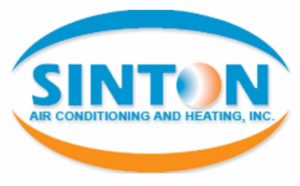Learn: About Air Source Heat Pumps for Home and Business
An air source heat pump is one of the most energy-efficient heating and cooling systems available today. Unlike other forms of heating systems which convert power or gas to heat, a heat pump is designed to transfer heat from one area to another. It can absorb heat and move your property inside to heat. It functions just rejecting it outside and absorbing heat from inside the house.
The most common type of heat pump is known as “air supply” because it uses outside air as the source of warmth in winter. Even air at 30° F. comprises some warmth. The heat pump can absorb heat from the cold air and use it to heat the house using a cycle in which a refrigerant is disappeared and condensed.
How It Works
The heat pump takes advantage of basic principles – if a vapor condenses it gives off heat, and when a liquid evaporates it absorbs heat. A heat pump system comprises one in the unit, two heat exchanger coils and one inside. Even though the air is chilly, the refrigerant from the coil is colder. The refrigerant evaporates, absorbing a quantity of heat as it starts to absorb any heat. The refrigerant circulates to the compressor where it is pressurized, increasing its temperature. To the coil, it goes in the compressor. Blower or the fan in the unit circulates air from within the house across the coil, where any warmth is absorbed by it. It causes the refrigerant to condense, giving off as the heat is consumed.
In summer, the heat pump “reverses” the cycle to absorb heat from inside the house and reject it outside. Works are only traded by the outdoor and indoor coils – either coil is capable of giving off heat or absorbing, based on its temperature. A heat pump works as an air conditioner when operating in mode. In actuality, heat pumps are sometimes known as “reverse-cycle air conditioners”.
Heat Pump Efficiency and Performance Ratings
Did you know an air source heat pump can deliver more usable heat for every unit of electricity by applying this cycle to move heat from one environment to another? In actuality, heat pumps are two to three times as effective as systems which convert electricity. Because of this, their costs are lower. And contrary to other heating systems whose efficacy is limited to a maximum of 100%, the efficiency of a heat pump is limited by it can absorb heat and provide it to another.
The heating efficiency of A heat pump is rated using HSPF or a Heating Season Performance Factor. New heat pumps have HSPF ratings ranging from 7.6 to over 10. Like air conditioners, heat pumps are rated exactly for heating. New heat pumps have ratings from 13. Refer to the label for the SEER and HSPF ratings, when buying a heat pump. There is much to learn about Air Source Heat Pumps for Home and Business.
New heating pumps comprise all of the following or some features to optimize efficacy:
Variable speed blowers, compressors, and motors which boost efficiency by matching the rate (and thus the power consumption) into the operating conditions.
More efficient compressors which use less energy to function (and also run more quietly).
Larger coil surface areas to achieve maximum heat transfer efficiency.
Time delays that change the on and off cycles of motors, compressors, and supplemental heating packs to catch the maximum amount of cooling or heating system.
Additional Energy Saving Options
Along with the SEER and HSPF ratings, there are energy savers.
Dual fuel systems combine a heat pump using a fossil-fuel furnace. The heating elements that supplement the heat pump are replaced by the furnace. With this sort of system, the heat pump provides the heating in weather, even as it is efficient, and the furnace takes over in cold weather, as it’s most efficient.
Programmable thermostats designed for heat pumps enable several “setbacks” while ensuring that the heat pump alone is used to bring the temperature back to normal settings. This eliminates dependence on the heating elements that are more expensive.
Operation and Maintenance Tips
Prevent manual setbacks – when you set back the temperature you obviously conserve energy, but if you turn up it the more expensive electrical heating elements can kick in, reducing or even removing any savings. If you would like to save by setting back the temperature, use a programmable thermostat designed to your heat pump (newest heat pumps include their own programmable thermostat).
Apart from programmed setbacks, try to maintain the temperature settings consistent. Every time somebody adjusts the temperature setting, a possibility is the backup heating elements will turn on, increasing expenses.
Assess the filter monthly and replace it as it shows signs of dust or dirt. Filters can restrict airflow, reducing the efficiency of the system.
Do not block supply registers or returns. Good airflow is critical to system performance.
Have the system checked annually by a professional service person. Routine maintenance can help extend equipment life and maintain performance exactly like with a automobile. So that you do not have to remember to call to schedule maintenance heating contractors offer service contracts.
Related Articles:


